Time travelling trees
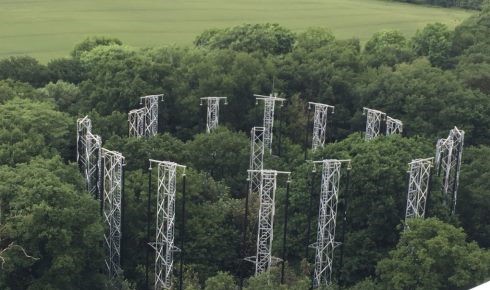
December 11th 2023
The University of Birmingham’s Samantha Dobbie explains how a UK science facility is helping young people understand and contribute to the science of climate change
Take a walk among the trees and you’ll discover there’s more to forested landscapes than meets the eye. As complex social-ecological systems, forests provide a useful lens to study key ideas at a wide range of spatial and temporal scales. In a giant experiment in a Staffordshire woodland, scientists are taking woodland study one step further. A feat of engineering, known as the Birmingham Institute of Forest Research (BIFoR) Free Air Carbon Enrichment (FACE) facility, features six rings of giant steel masts that have been inserted into a mature oak woodland. The masts are used to raise CO₂ levels in pockets of the woodland to 150ppm above ambient. This mimics the projected atmosphere levels in 2050 and helps scientists document how the whole ecosystem responds – do the trees grow faster, locking away more carbon, or will changes in the soil and insect life cause problematic knock-on effects?
Alongside the research, these ‘time travelling trees’ provide an incredible opportunity to raise awareness of the impact of climate change on our forested landscapes. Learning about the effects of elevated CO₂ helps us plant woodland most likely to survive and thrive in the future. However, there is growing concern among academics in the higher education sector that knowledge about plants, trees and forests is diminishing just when we need it most. At the same time there is greater recognition within the secondary school sector of the need to embed climate change and sustainability within teaching by taking a whole school approach. A recent Strategy Paper by the Department for Education has cemented this ambition, with climate change education and green skills and careers at the top of the agenda.
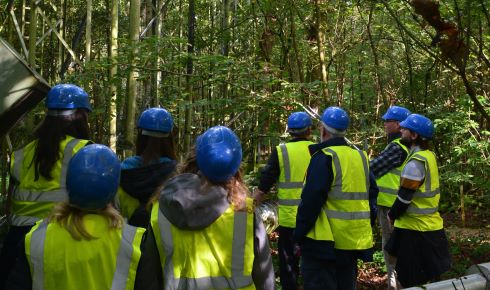 School groups visit BIFoR to learn about the effects of climate change on plants, trees and forests
School groups visit BIFoR to learn about the effects of climate change on plants, trees and forests
Engaging the next generation
It’s important to highlight, however, that forests, plants and ecosystems have long been rooted within school curricula and exam board specifications. The chemistry of carbon and the biology of disease and pathogen spread, as well as the biogeography of tipping points and the depiction of trees in fiction are just a few examples. Despite this, such perspectives have too often been overlooked in school classrooms. In a previous role as a secondary science teacher I found high-quality resources to teach core concepts using examples from plants to be elusive. Instead, real-world applications of science tended to favour examples that were human or medical in nature.
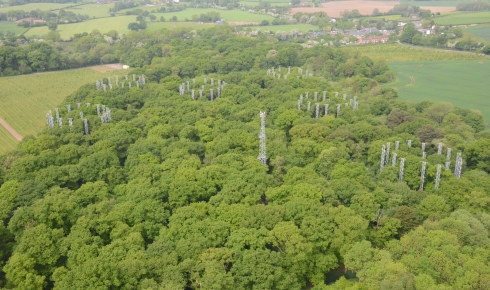 The feat of engineering features six rings of giant steel masts that have been inserted into a mature oak woodland
The feat of engineering features six rings of giant steel masts that have been inserted into a mature oak woodland
The aim at BIFoR is to bridge this gap, translating the research outputs from the institute into high-quality resources for secondary schools, with the hope that it will help engage the next generation of plant scientists and foresters. One way to achieve this is through activities that encourage learning outside of the classroom (LOTC). Schools can visit the BIFoR FACE facility, take a walk among the time-travelling trees and see the research in action. Studies have shown that LOTC can have many benefits, including enhancing academic attainment and personal development, as well as highlighting the real-world applications of science and boosting spiritual, moral, social and cultural needs.
Virtual resource
However, taking pupils outside of the school gate to visit outdoor science facilities is not always possible. Time, access, cost and health and safety concerns were highlighted as potential barriers to visiting BIFoR FACE by a recent cohort of PGCE students.
To help overcome this, and to help students from further afield engage with our work, BIFoR has partnered with the Higher Education Futures Institute to create a fully immersive virtual tour of the FACE facility. Pupils can now visit one of the world’s largest climate change experiments without leaving their school building.
Stunning 3D images enable pupils to explore the virtual BIFoR FACE facility at their own pace, clicking on the arrows to move forward and on the numbered dots to find out more information. By taking a stroll around the virtual woodland, pupils can find out how we are able to raise CO₂ levels in areas of the woodland and explore the instruments needed to track the journey of a carbon molecule from one meter below ground to right up in the tree canopy.
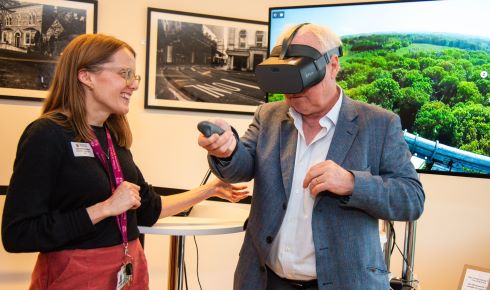 BIFoR uses a range of technology to educate
BIFoR uses a range of technology to educate
Additional lesson resources link the self-guided tour to the Key Stage (KS) 3, 4 and 5 Biology and Geography curriculum. For example, there is a data set that can be ‘downloaded’ from a dendrometer (tree growth ring) in one of the 3D scenes, with instructions to chart the growth of the tree against time to visualise the impact of elevated carbon.
Another curriculum-linked activity enables students to take on the role of plant pathologists and assess the impact of high CO2 levels on the prevalence of fungal diseases. A further ‘escape room’ task encourages pupils to work as a team to solve puzzles and clues while learning more about the FACE experiment and gaining a better understanding of curriculum content.
We have also developed ‘BIFoR in a Box’ to empower schools to make the most of any trees on their own school site or nearby. This citizen science project enables pupils to install their own dendrometer, or ‘tree growth’ bands, on local trees. Using curriculum-linked resources, pupils design and plan their fieldwork, carry out a risk assessment and then install their own ‘DIY dendrometer’ bands. Each month pupils use a set of calipers to take a reading of the change in circumference of their tree, joining a growing community of citizen scientists across the UK.
Making learning stick
Compared with a school visit, monitoring tree growth on the school grounds can be done at minimal costs, requires the teacher to carry out little or no risk assessment and encourages students to think differently about their school. The act of installing a dendrometer band on a tree provides a starting point to explore key topics such as the carbon and the water cycle and the links between them, making learning stick. The measurements taken by pupils and submitted by schools also link directly to those taken by researchers and a core team of site staff at BIFoR FACE.
Additional resources act to shorten the distance between researchers and school pupils yet further, and demonstrate the breadth and depth of research happening at the institute. Pupils can take a walk among time travelling trees, monitor fungal pathogens and engineer their own flux towers (using spaghetti and marshmallows) without leaving their classrooms. Career profiles help schools fulfil the Gatsby career benchmarks and highlight that forestry is for everyone, from PhD students to data analysts.
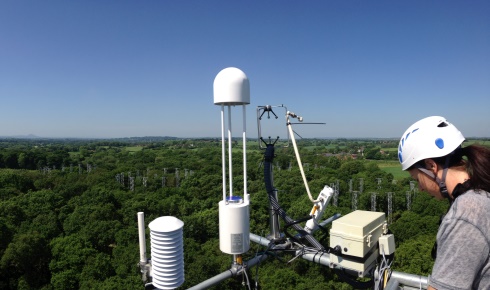 BIFoR is helping scientists to understand the realities of climate change
BIFoR is helping scientists to understand the realities of climate change
These ‘spotlight’ resources can be embedded within lessons or used as resources for flipped learning and homework. Assemblies highlight the collaborative and creative nature of science, while reinforcing the interconnectedness of resilient ecosystems. Mini lectures by PhD students invite pupils in KS4 and KS5 to go beyond the curriculum and explore the day-to-day realities of being a scientist. Released towards the end of the school year, these resources have been designed to support the transition between years and develop independent learning skills such as good note-taking at A level.
Climate-friendly future
With COP 28 running in the UAE as The Biologist went to press, attention now turns to the new academic term and the impact of climate change on forests at a global scale. Using the ‘future forests’ resource, pupils throughout the UK, Dubai and beyond are working together to consider the root causes, effects and solutions of key climate change issues linked to woodlands, with their ideas and discussions shared on an online forum. Key messages from their ‘solution trees’ will be shared at knowledge exchange events to mark COP 28.
This activity encourages dialogue and ensures that students have a meaningful voice in supporting an exciting climate-friendly future to take root and grow.
You can find out more about the BiFoR FACE facility or access the BiFoR in a Box project and citizen science data set
Dr Samantha Dobbie is education and outreach officer at Birmingham Institute of Forest Research.


